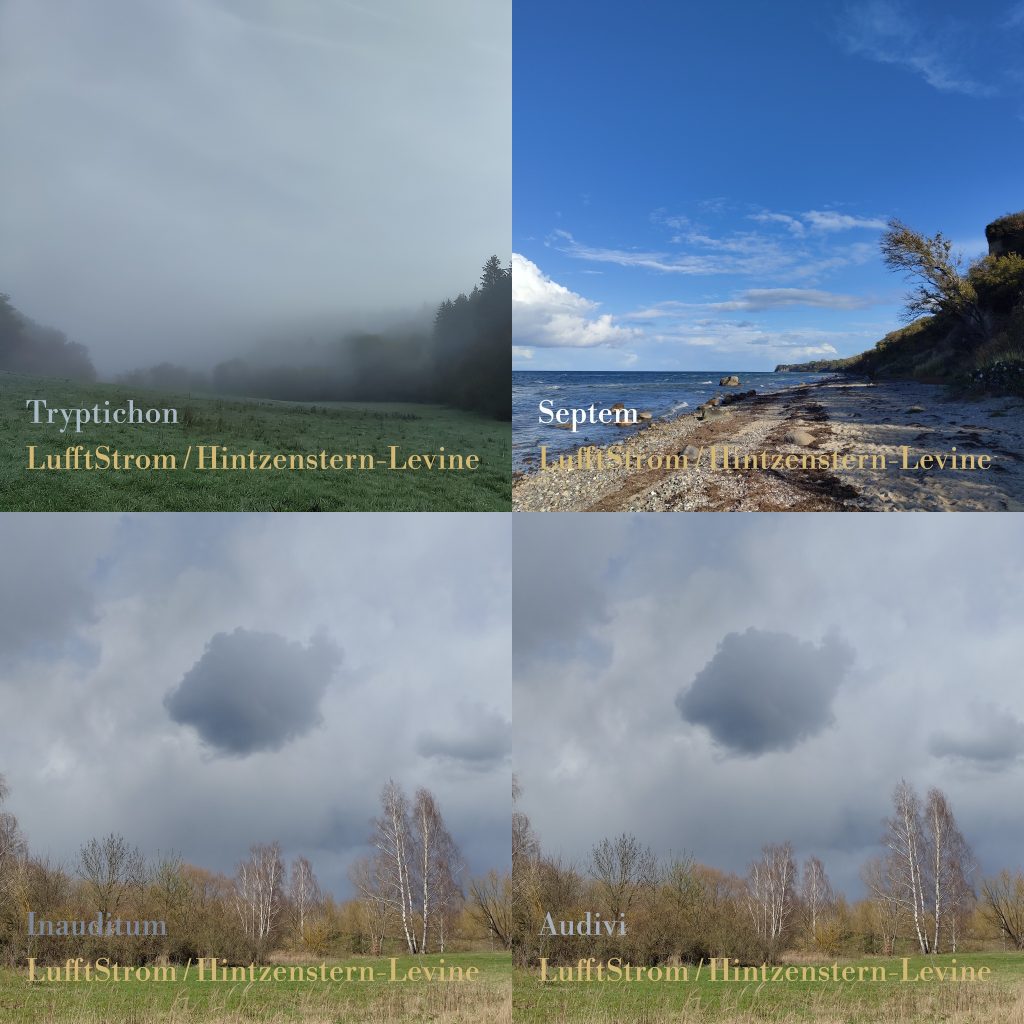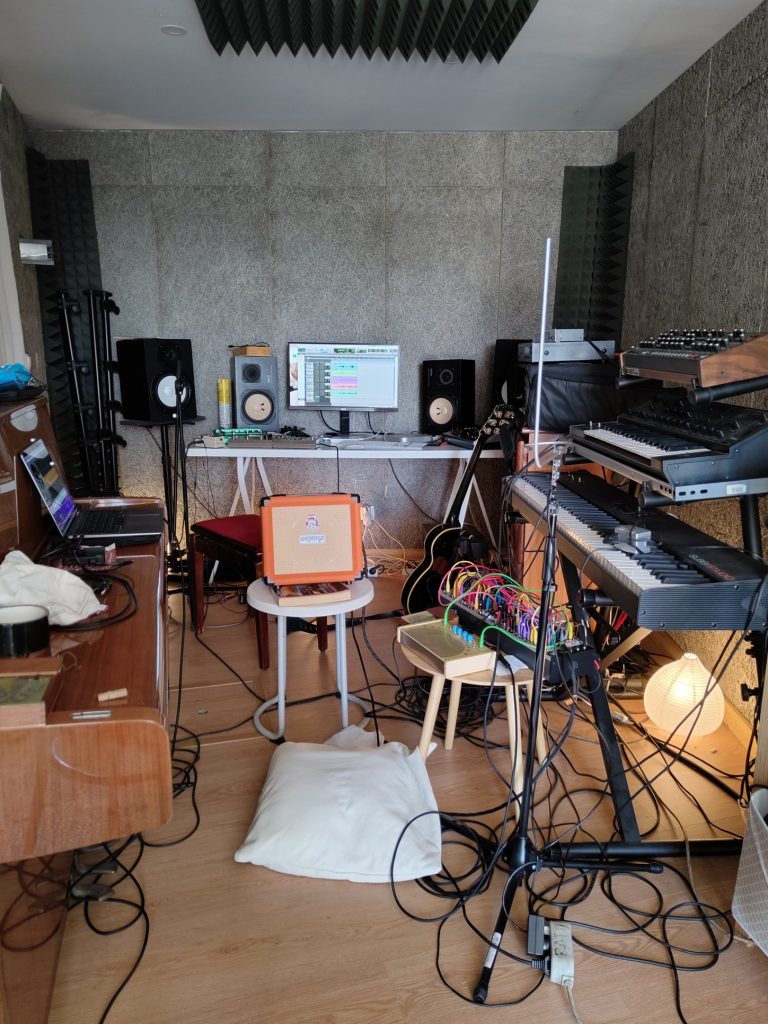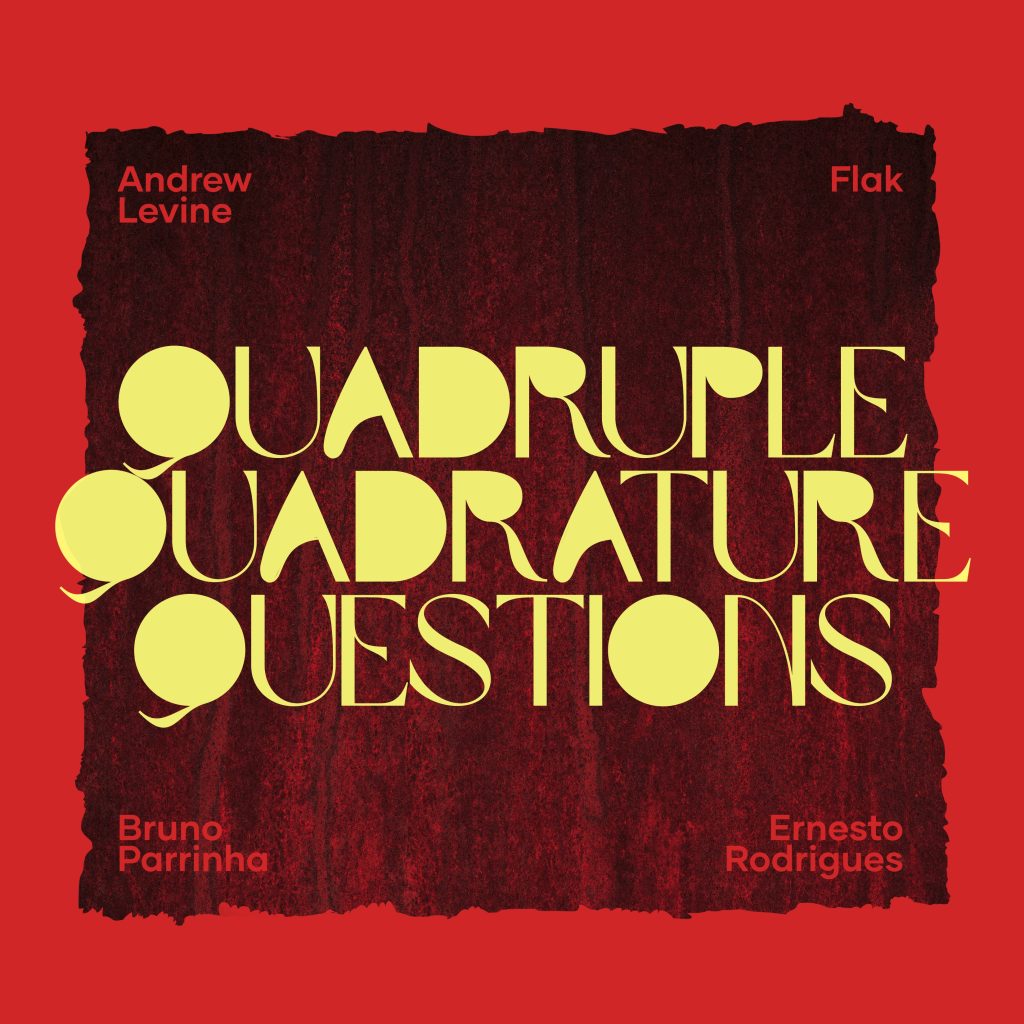Studying the Landscape Audio Stereo Field…
…and Ciat-Lonbarde Din Datin Dudero Fyral.
Check out the release on Nachtstück Records.

Theremin ~ Modular synthesizer ~ Haken Continuum ~ Crazy stuff…
Studying the Landscape Audio Stereo Field…
…and Ciat-Lonbarde Din Datin Dudero Fyral.
Check out the release on Nachtstück Records.

On Saturday, 17 February 2024 the trio Crystalline Elements featuring Benedikt Hansjosten – Cello, Benedikt Simon – Korg SV-2 and Andrew Levine – Electronics got together for a spontaneous improvised session at Galerie Netzwerk in Trier.

Feel free to check out our eight videoclips and sonically optimized audio release.
C❄️E will have it’s Hamburg premiere on Friday, June 07 as part of the blurred edges 2024.
Workshop: Electronic music for children and young people
Music has been around since time immemorial. People possibly first used their voices (and lips to whistle), then discovered rhythm, clapping, drumming, blowing in and bowing on objects.
The oldest musical instrument known to us today is a bone flute that was found in a cave in Ulm and is around 35,000 years old!
For many thousands of years, until the age of electricity in the early 1800s, all instruments were based on the principle that a “body of sound” is set in vibration; moving so fast that we hear one or more tones.
How does that work?
An object made of stone, wood, stretched skin (fur), metal, etc. is stimulated by tapping, a stretched string is plucked or bowed with a bow (strung with hair that feels rough), a column of air is made to resonate by blowing… So that you can hear something with your bare ears.
Let’s take a look at this! […]
Are you interested? Please do contact me via eMail 🤗
Workshop: Elektronische Musik für Kinder und Jugendliche
Musik gibt es seit Urzeiten. Möglicherweise haben Menschen zuerst ihre Stimmen (und Lippen zum Pfeifen) genutzt, dann den Rhytmus entdeckt, geklatscht, getrommelt, in Objekte gepustet und auf ihnen gestrichen.
Das uns heute älteste bekannte Musikinstrument ist eine Knochenflöte, die in einer Höhle in Ulm gefunden wurde und etwa 35.000 Jahre alt ist!
Viele Tausend Jahre lang, bis zum Zeitalter des elektrischen Stroms Anfang der 1800er Jahre, basierten alle Instrumente auf dem Prinzip, dass ein “Klangkörper” in Schwingung versetzt wird; sich so schnell bewegt, dass wir einen oder mehrere Töne hören.
Wie geht das?
Ein Objekt aus Stein, Holz, gespannter Haut (Fell), Metall usw. wird durch Klopfen angeregt, eine gespannte Saite wird gezupft oder mit einem Bogen (mit Haaren bespannt, die sich rauh anfühlen) gestrichen, eine Luftsäule durch Blasen zum Mitschwingen gebracht,… So, dass man mit blossen Ohren etwas hören kann.
Gucken wir uns das mal an! […]
Melden Sie sich gerne bei Interesse 🤗

I just revamped my Electronic Press Kit. There are still quite a few options to book me for 2024 so please check it out and get in touch 🙂

A few weeks back Rick Reid got in contact with me about featuring on his program. I was very happy to oblige and we chatted about the “Quadruple Quadrature Questions” as well as the pipelined releases featuring LufftStrom: my collaboration with Michael von Hintzenstern.
Check out the November 2023 episode on Rick’s website, Spotify or Apple Podcasts.





Send me an eMail to order.

November sees the release of all four recordings of the Duo LufftStrom. When I had set up at Denstedt Michael von Hintzenstern demonstrated the Liszt-organ–and I just had to play along. “Tryptichon” (11/01) is a collection of the three playful pieces where I focus on [1] Cracklebox, [2] Stereo Field and [3] Continuum.
“Septem” (11/08) is the complete recording of our first concert in Michael’s series „Neue Wege zur Musik – Wege zur Neuen Musik“ (New paths to music–Paths to new music). Dada Royal #40 is a video documentary on this evening by Salve.tv
Next up was Bad Berka. After setting up on the evening before the concert we used the quiet of the following morning to record “Inauditum” (11/15): two improvised sets based roughly on the sequence we had laid out for the evening, when the musical segments were interspersed with some recitations.
“Audivi” (11/22) is the musical part of the live concert.
On my Spring tour to Portugal I played at Cossoul in Lisboa, traveled to Porto for the party at Sonoscopia and returned for the first gig at Sistema SMOP. By that time I was longing for a group session 😉

Come May 1st I met up with Ernesto Rodrigues and José Bruno Parrinha, or rather tried as (surprise, surprise 😉 there was a manifestação blocking the Praça Martim Moniz. Cars were blocked but I managed to cross and we drove over the Ponte 25 de Abril and onward to Flak‘s home and studio in the countryside.

I patched my modular, enjoying the sunshine and a drink on the terrace…

…and then it was time to set up in the cozy studio space.


Flak was at the recording station, playing lap guitar with FX and engineering the multitrack, Bruno was playing the bass clarinet on the opposite end, and me and Ernesto with his viola were snuggled up on between. I don’t remember kneeling, but the pillow is proof that I must have spent the entire session in this position.

Here is my setup of modular, STEIM Crackle Box and Stereo Field next to the OpenTheremin v4 I brought along.
We began tracking with a 20-30 minute long, continuous, freely improvised deep dive. After that I suggested we record a sequence of miniatures between three and five minutes of length to explore different sonic characters and colours, with more focus on developing each one–rather than trying to cover all possible ground. I picked that up from Thomas Reuter when recording the al’kar(r)at SUITE. And on and on we recorded, until the evening culminated in a delicious affair involving black linguine, fried shrimp in a delicious sauce and me and Ernesto singing our favourite opera arias.
The result of (the recorded part of) our session is available now on all major music downloading and streaming platforms as “Quadruple Quadrature Questions”, e.g. on Apple Music.


See and hear Katrin Bethge, John Eckhardt and me at Kapelle 6 in the park cemetery Ohlsdorf.